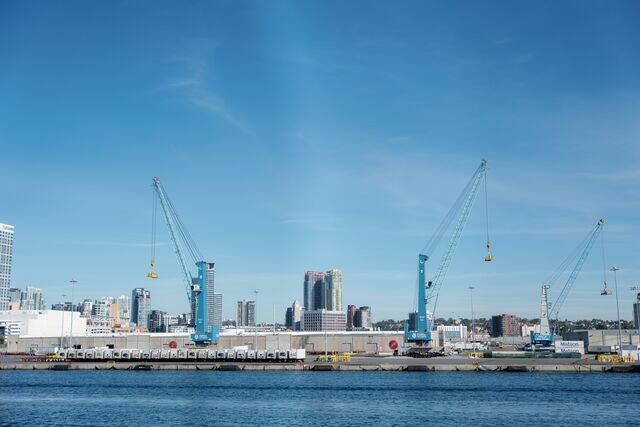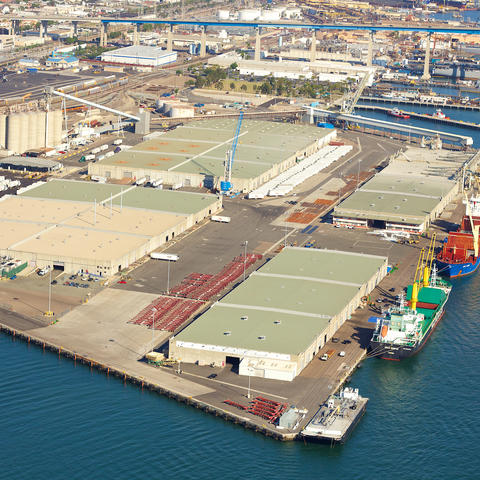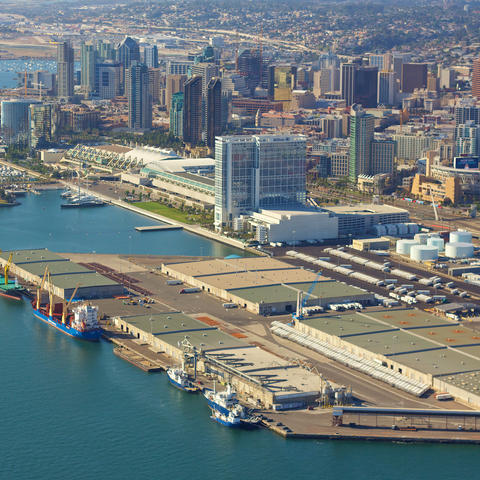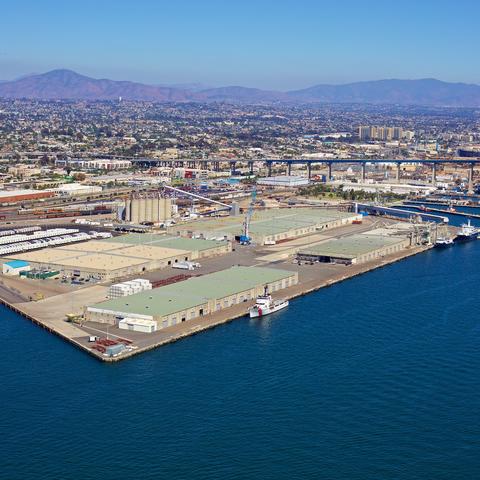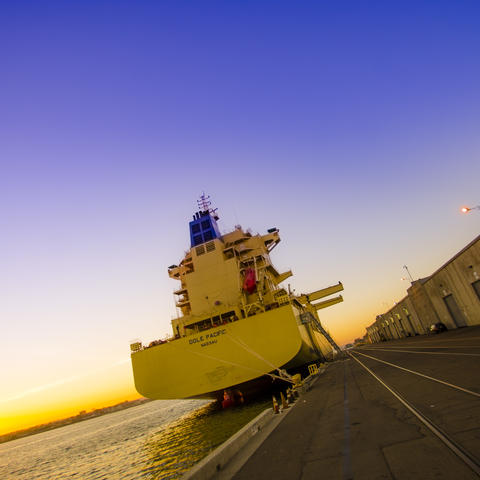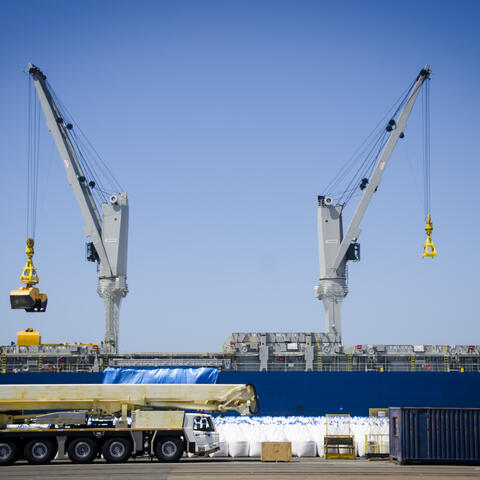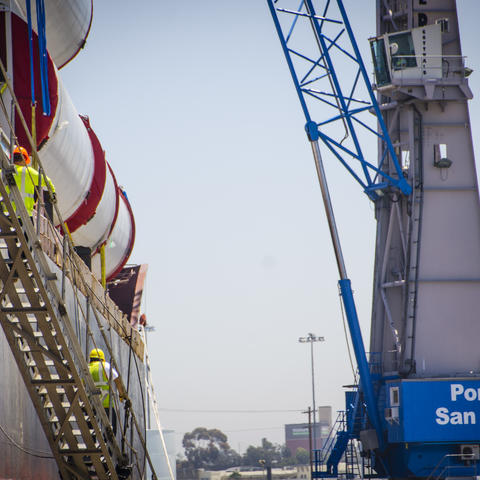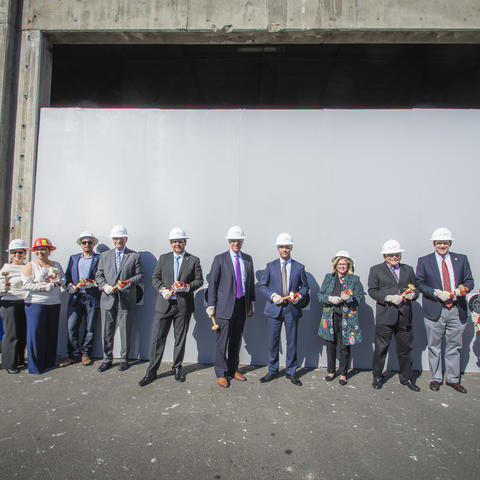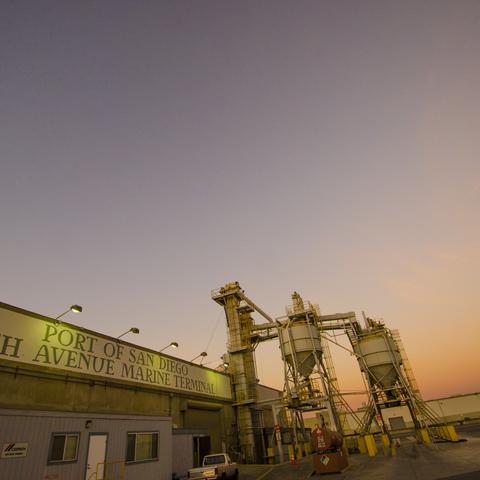Tenth Avenue Marine Terminal Redevelopment
The Port’s maritime businesses are our gateway to the world, leading our working waterfront and facilitating the movement of goods and people, internationally and domestically. To support our cargo business, the Port of San Diego is making significant progress on the Tenth Avenue Marine Terminal (TAMT) Redevelopment Plan. Phase 1, also referred to as the Modernization, was completed in 2020. With federal grants awarded in 2024, additional improvements are underway. Read on for details.
Phase I: The Modernization
Before and After Photos
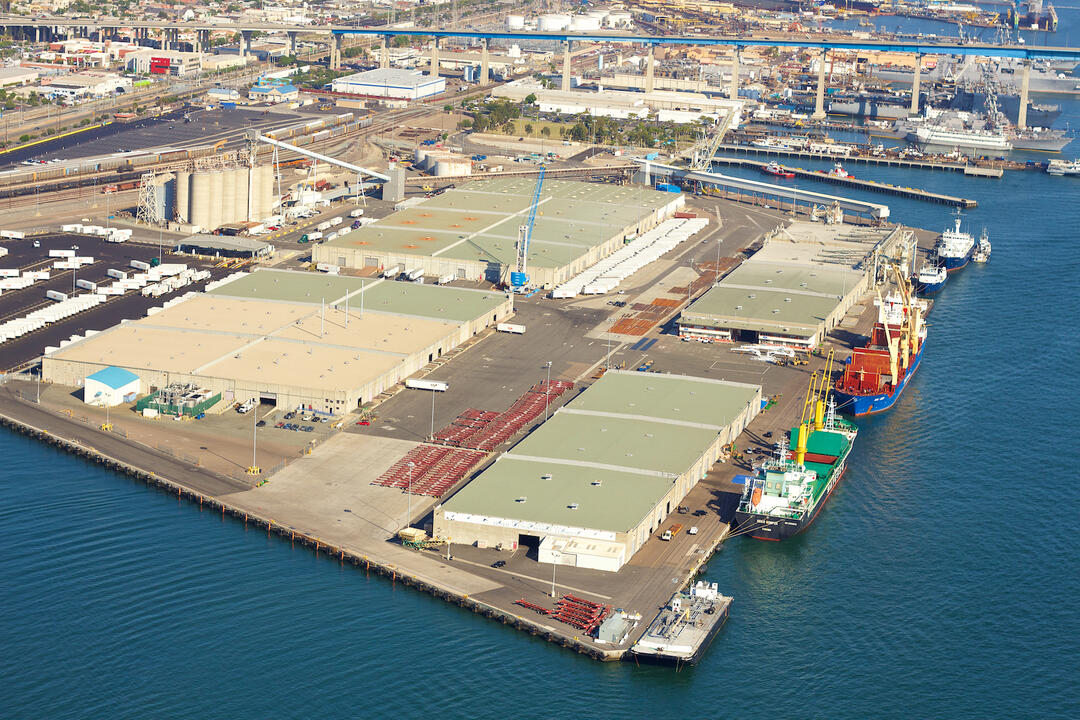
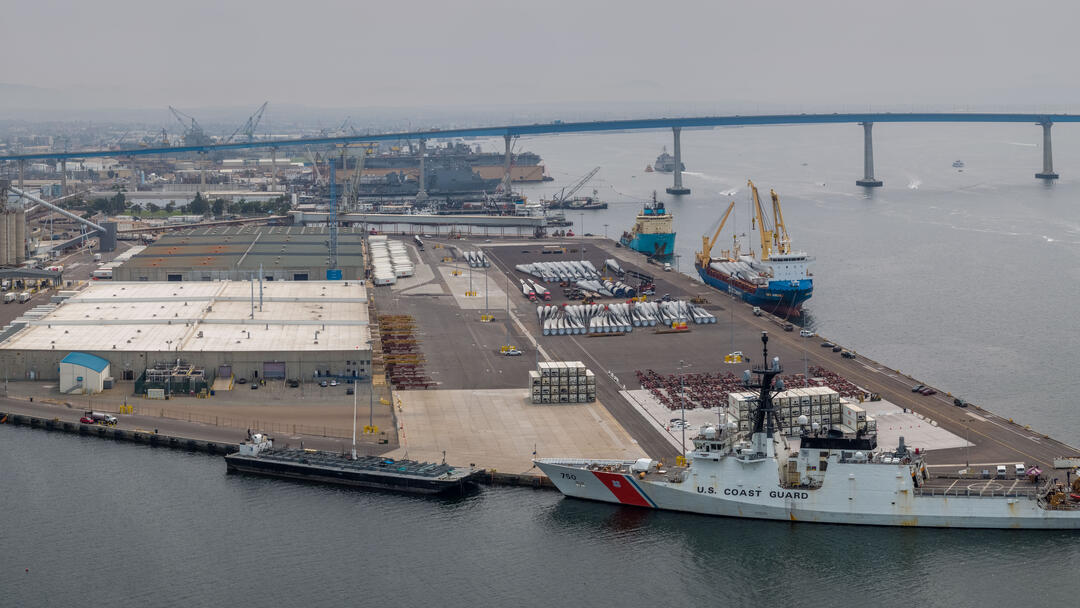
Completed in 2020, the project removed two obsolete warehouses and created much-needed laydown area for project cargo like windmill components. It also included improvements to on-dock rail, utilities, and new lighting and pavement. Additionally, an exemplary stormwater treatment system was developed to maximize stormwater capture on the terminal. The project brought new maritime cargo business to the Port and created more local jobs and, through smart use of technology, this modernization project has contributed to cleaner operations at the terminal enabling it to emit fewer of certain types of harmful pollutants.
The federal government recognized the importance of modernizing the terminal with a $10 million TIGER grant from the U.S. Department of Transportation. The Port matched the grant with a $14 million contribution for a combined budget of $24 million.
The Modernization received several awards including:
- Outstanding Airport and Port Project from the American Society of Civil Engineers in 2020;
- An award from the Construction Management Association of America in 2020 for Transportation Projects; and
- Outstanding Industrial Stormwater BMP Implementation Project from the California Stormwater Quality Association in 2019.
A time lapse video shows the demolition of an underutilized transit shed located adjacent to three of the terminal’s primary vessel berths. Material from the shed was recycled and reused onsite as an aggregate base under a new pavement system. Additional work for the Modernization Plan/Phase 1 of the redevelopment project included:
- the excavation, grading and compaction of the areas under the demolished buildings to support a finished pavement;
- site utility improvements; and
- stormwater BMP improvements.
Phase II and Beyond
RAISE Grant
In June 2024, the Port of San Diego was awarded a $5 million grant from the U.S. Department of Transportation (DOT) for planning, design, and environmental permitting for Phase II of the Tenth Avenue Marine Terminal (TAMT) Redevelopment Plan. This project includes on-terminal rail track replacement, realignment, and load capacity improvements. It also advances the planning of seismic upgrades, concrete resurfacing, potentially additional stormwater improvements, water and utility reconfiguration and upgrades, as well as front gate, perimeter fence, and operations center reconfiguration. These improvements will maximize operational areas on the terminal, make cargo handling and movement more efficient, and support future charging technologies for electric vehicles and equipment. The announcement came June 25, 2024, from U.S. Senator Alex Padilla’s office as part of the FY 2024 Rebuilding American Infrastructure with Sustainability and Equity (RAISE) discretionary grants program, which invests in road, rail, transit, and port projects across the country that may not quality for funding through other U.S. DOT grant programs. Sen. Padilla supported the Bipartisan Infrastructure Law’s substantial increase in funding for the RAISE program.
The Port is collaborating with the U.S. Maritime Administration, an agency within the DOT, to finalize the grant agreement ahead of starting the planning, design, and environmental review process for TAMT Redevelopment Phase II. The timeline for construction is to be determined and is dependent on future funding.
EPA Grant - San Diego Clean Cargo Project
In October 2024, the Port of San Diego was awarded a nearly $59 million grant from the U.S. Environmental Protection Agency (EPA) for the San Diego Clean Cargo Project (CCP), which will further electrify operations at the Port’s two maritime cargo terminals and support Zero Emissions (ZE) freight movement. An additional $28 million in match funding provided collectively by the Port of San Diego, the San Diego Air Pollution Control District (APCD), Dole, PASHA, Skycharger, and SSA Marine brings the total project cost to $86 million.
The project will significantly reduce emissions to neighboring communities by funding the following: construction of remaining infrastructure improvements needed at (TAMT) to support ZE equipment and shore power systems; installation of two shore power systems to support commercial harbor craft at TAMT and deployed throughout San Diego Bay; installation of a shore power system to support ocean-going vessels calling at TAMT; advancement of a proposed zero-emissions truck stop to serve the Port’s two maritime cargo terminals; and the purchase and deployment of battery electric zero-emissions cargo handling equipment, vehicles, and charging infrastructure, including 32 pieces of cargo handling equipment, 20 medium-duty stevedore shuttle vans, and 25 heavy-duty trucks. These investments will result in a near complete electrification of the Port’s maritime cargo facilities in support of the Port’s Maritime Clean Air Strategy. The funds are made possible by the Inflation Reduction Act of 2022, which included $369 billion for Energy Security and Climate Change programs.
The Port and EPA staff have begun the process of finalizing the grant agreement with the goal of starting the project in early 2025. The timeline for completion of these projects is anticipated for 2028.
Tenth Avenue Marine Terminal Redevelopment Project Timeline
U.S. Department of Transportation awards $10 million TIGER grant funding to the Port for the Modernization.
The Board of Port Commissioners adopts Tenth Avenue Marine Terminal Redevelopment Plan. Vickerman & Associates, LLC advised on the plan. The Board also certifies the Final Environmental Impact Report for the plan.
The Board awards $12.3 million contact to Dick Miller, Inc. of San Marcos to begin work on Phase 1, also referred to as the Modernization.
Demolition and site improvements of Transit Shed 1 begins.
Transit Shed 1 demolition and site improvements are complete.
Demolition and site work for Transit Shed 2, along with rail improvements, begins.
Port celebrates completion of Phase I of the Tenth Avenue Marine Terminal Redevelopment Plan, also known as the Modernization Project.
Port awarded $5 million grant from the U.S. Department of Transportation (DOT) for planning, design, and environmental permitting for Phase II of the Tenth Avenue Marine Terminal (TAMT) Redevelopment Plan.
Port awarded a nearly $59 million grant from the U.S. Environmental Protection Agency (EPA) for the San Diego Clean Cargo Project (CCP), which will further electrify operations at the Port’s two maritime cargo terminals and support Zero Emissions (ZE) freight movement. An additional $28 million in match funding provided collectively by the Port of San Diego, the San Diego Air Pollution Control District (APCD), Dole, PASHA, Skycharger, and SSA Marine brings the total project cost to $86 million.
